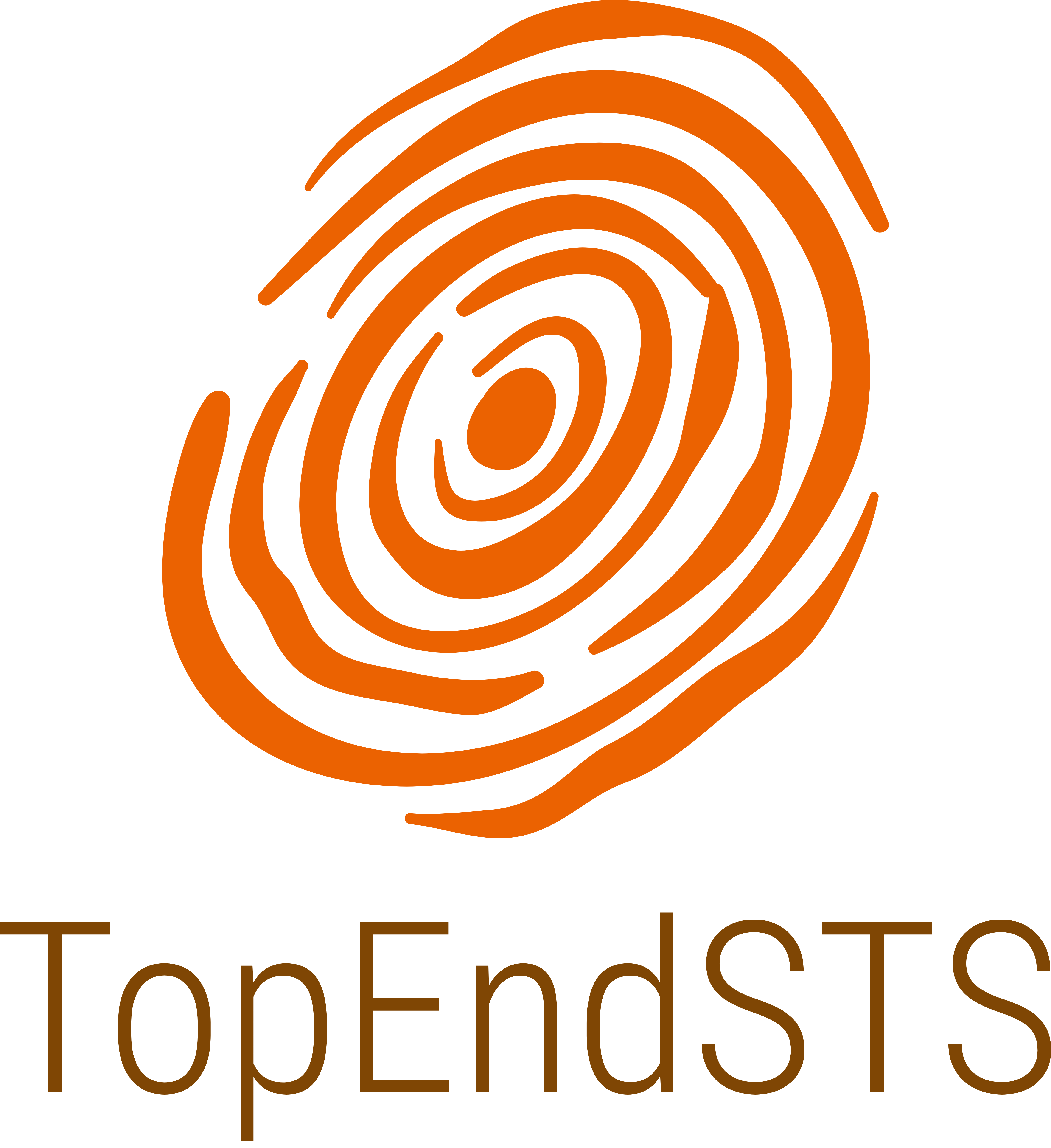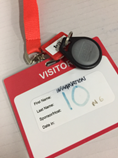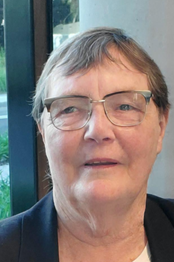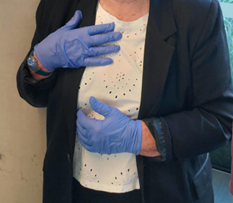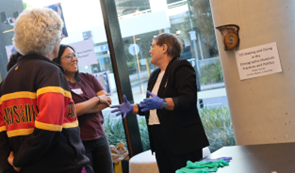‘Making and Doing STS’ amidst the sociomaterial paraphernalia of anthropology inflected museum science
Inquiring into the making and doing of interactions between sciences, technologies and societies (STS) in a particular situation is doing science. I mean this in a general sense. Scientists, including STS practitioners, are proposed as beginning inquiry by confronting confusion through devising situated means to order and describe. Sometimes such inquiries are imagined as contriving measurable and testable frameworks (quantitative), and/or interpretive frameworks that offer possibilities for re-description in helpful ways (qualitative). This process of devising ways of rendering the world’s confusing visage as orderly, is termed ‘method’. In STS it is well established that methods effecting (enough) order to allow framing, description and/or measuring, must be as messy and complex as the confusing situations they seek to engage; situations do not arrive as neat coherent and consistent wholes with ordered parts (Mol and Law, 2002; Law, 2004).
Scientists deploy particular practices and affective orientations in beginning inquiry, and albeit in vague ways, the sciences’ practices and affective orientations differ from those of philosophers and/or artists who also confront confusing manifestations of here and now situations. Adopting a scientific approach to thinking about scientific inquiry it follows that doing STS is a doing of scientific inquiry into the doing of scientific inquiry; it could be named as meta-science, a science of science. ‘Making and Doing STS’ is also doing science. It is the doing of scientific inquiry into the doing of scientific inquiry into the doing of scientific inquiry. Is it a meta-meta-science? Or perhaps it is intra-intra-science?
OK, that is a nice word game, but it paints a rather uncomfortably categorically hierarchical vision of ‘engaging confusion’ – just too neat by half! And possibly it is not much help if you want to take up the challenge offered by the invitation to “Reflect on your participation in the ‘Making and Doing STS’ exhibition at the 2024 AusSTS Network conference”. So how might one start? One way to begin is to start with affect. I suggested above that when set against philosophers and/or artists, in making inquiry scientists deploy particular ‘affective orientations’. I claim that scientists’ affective orientations involve feelings about method. Science is traditionally described as dispassionate yet, in actuality it is strongly driven by affective states like conceptual disconcertment, curiosity, persistence, assiduousness, and the desire to resolve anomalies in inquiry using scientific methods.
Imagining the making and doing of a ‘Making and Doing STS’ display as a messed up and messy form of intra-intra-science, in this short essay in speaking ontologically, I set out to identify who, as knower, ‘I’ become and what that ‘I’ knows, in presenting a ‘Making and Doing STS’ display as part of a professional STS practitioner meeting (a 4S or EASST meeting, or a national meeting of STS practitioners). In asking this I am asking about the ontological displacements ‘I’ experience as ‘I’ burrow into the core of a varied set of practices, procedures, and protocols instantiating the lives of a diverse range of institutional settings. These are the practices, procedures and protocols that have gotten muddled together at the core of the confusion being engaged. In my case inquiry is pursued amidst the sociomaterial paraphernalia of anthropology inflected museum science in colonial era ethnographic collections. I am asking about the epistemic re-positioning which I propose is effected when engaging in making and doing STS and simultaneously inquiring into that making and doing of STS. I am inquiring into the making and doing of a making and doing STS display.
Telling of experiencing museum practices-in-practice in STS Inquiry
I enter the museum building through the back door accompanied by the recently retired Head of Collections. My guide, now emeritus curator uses her electronic proximity access key fob to signal the museum’s main back door to open. We present ourselves to the security guard and she and I duly sign the attendance sheet. I am presented with a visitor card attached to a lanyard, which I must wear while I am in the “back end” of the building. Attached is a label announcing VISITOR and an electronic fob key that will open doors and which I must swipe on the other side of the door, so at all times the security staff will be able to “see” exactly in which space I am, until I exit through the building back door. I feel very much an ‘all at sea’ newbie in the museum, fumbling and forgetting several times to ‘sign myself in’ as I enter new spaces. The intensity and precision of the spatial orderings inside the building unnerved me.
A little later I am ushered into the storeroom housing items that have their origins in Pacific Ocean islands. Having listened solemnly to the rather sternly issued instruction that while I can handle the labels to ascertain exactly which object I am looking at, I must not touch the actual items, and under no circumstances move anything. I don the proffered bright green latex gloves and begin the search for the objects I have identified as of interest to me in the list of the objects owned by the museum.
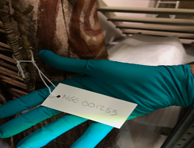
Museum objects must be protected from greasy human hands. Every item is labelled with its unique identifier code, and under no circumstances can labels be removed.
The project
In this section I introduce my project of making and doing inquiry into science, technology and society (STS) in doing inquiry inside a museum ethnographic collection (Verran, 2025). The museum, specifically the ethnographic museum, is taken as a site for inquiry into the workings of anthropology inflected museum science in its engagement with the products of “other” epistemic traditions. Proposed as an epistemic configuration, the museum ethnographic collection is inquired into in hopes of generating insights that will contribute to efforts to devise an emergent decolonizing epistemic ethos in museums. Museum items, ethnographic objects, are proposed as epistemic entities, analogous to the epistemic entities that come to life in experimental scientific laboratories.
Experiencing happenings of museum practices and narrating those happenings are proposed as steps toward making a claim about how museum science might recognize the epistemic traditions within which ethnographic objects the museum cares for first came to life. The claim is that ethnographic objects feature an ineluctable ontological multiplicity and are thus as much political objects as they are epistemic objects. This claim opposes the assumptions of ontological singularity and political neutrality that afford museum claims that their items are exemplary cultural universals. Part of eliciting a decolonizing institutional ethos in the ethnographic museum is the devising of novel institutional practices to support and enhance collective enactments that explicitly recognize the inherent ontological multiplicity and political nature of the items that museums care for.
In this project I see myself as methodically enacting inquiry by which I am epistemically re-positioning myself as knower who makes a knowledge claim concerning complex ontological multiplicities which is also a judgement about what museum practices and procedure should be. The inquiry is simultaneously descriptive: what an ethnographic museum is; and normative: what praxially speaking, the epistemic ethos of an ethnographic museum should be. In the inquiry, I am attempting to take up an imagined epistemic positionality alongside that of the complex being of the ethnographic object held in an ethnographic museum store-room. This is not as wacky as it sounds. There are three documentary movies that attempt to do exactly this: Alain Resnais and Chris Marker. (1953). Les Statues Meurent Aussi/The Statues Also Die; Ariella Aïsha Azoulay (2019). Un-Documented_Unlearning Imperial Plunder; Mati Diop. (2024). Dahomey. The argument implicit in the videos, and explicit in my STS argument is that such an epistemic positioning is one that should be occupied by a museum curator who proceeds in epistemic good faith in their institutionally situated knowing, in avoiding perpetration of epistemic cruelty and injustice in their work as a museum curator. But learning how to undertake such epistemic re-positioning work in abandoning the normatively prescribed empirical stance, and allowing ourselves to be changed as knowers by the experience of inquiry (Stengers 2021:71) is not easy.
The epistemic positioning of the museum ethnographic object, and hence the knower who knows that object in epistemic good faith, is effected (made to become), in the complex and messy mixing-up and combination of the practices, procedures, and protocols of radically distinct institutions. Minimally it involves engaging with the (past) workings of the institution(s) in which the object was made and first came to life as meaningful, and the (current) workings of a modern museum where it has a radically different meaningful life. And maybe with the various intermediate institutions like the art market. The ‘historio-geographeo trick’ of this work is to render the politico-epistemic regimes of these the incommensurable sets of institutional practices into a single plane what we might call a ‘politico-epistemic economy of displacement’ (Rheinberger, 1997:4; Verran, 2025: 87). This is where the ‘what’ that is the ethnographic object, and the ‘who ‘I’ as knower become in knowing what ‘I’ know, are mutually rendered.
In this project the conceptual entity of ‘ethnographic object’ is seen as necessarily as a conceptually multiplicitous entity: an entity having life in a contemporary institution (a modern museum) on account of having previously had a life in some ‘other’ institution, one that may well have been extinguished in the epistemocide that often accompanied European colonialism. Such is the case for example with the conceptual entity of a ‘kwoi’ that originally came to life in the workings of the Hevehe, an institution combining governance by Spirits and humans of place in what is now Gulf Province in PNG. I am familiar with this object which is currently owned by the Museum and Art Gallery of the Northern Territory (MAGNT) under the name of ‘spirit board’ (Verran, 2025). ‘Kwoi-spirit board’ in my project is taken as a multiversal conceptual entity ‘an ethnographic object’. Perhaps we can imagine it as an object generated in reality as projection of that ‘other’ people-place in the work of the Hevehe and as projection of the workings of MAGNT which necessarily values the object because it previously had life in the Hevehe institution. Two projections which become in and as the sociomaterial form which is the neither and both reality of that entity.
Making and Doing a ‘Making and Doing STS’ Display
So how does such a project come to life as a display kiosk in an STS making and doing exhibition?
Compared to others’ kiosks, my preparations for the Making and Doing STS Exhibition held as part of the AusSTS Network Meeting in Canberra in November 2024, were minimal. I planned my display as having four elements: two of my props instantiated the sociomaterial paraphernalia of anthropology inflected museum science: several highly coloured latex gloves, and a rather cute basketry weave zoomorphic yam mask figure made by an Ambelam craftsperson in East Sepik probably in the 1980s for the PNG art and craft market. In addition, there was to be the embodied me wearing a bright purple pair of latex gloves, and a printed sign: “STS Making and Doing in the Ethnographic Museum. Practices and Politics”. The organisers of the exhibition space allocated me a position in the hall with two surfaces: a concrete column, part of the building infrastructure, and a large black table surface.
Meanings in ‘Making and Doing STS’ kiosks in exhibition are radically under-determined. What the display says to/asks of anyone who attends to it always requires elaborate talk and translation. My hope was that I would find a way to help others discern the radical ontological multiplicity that characterises the workings of an ethnographic museum collection. Attached at my head height to the column I stood next to in making the display. I want others to experience the many entities that the mask manifest before us is, as it sits there attached to the surface of the column with the help of small sticky-backed velcro patches. I first describe a minor disconcertment I experienced in the practice of setting up the display, and second the confusion visitors expressed on encountering the charade of my stall. I am drawing attention to the practices-in-practice of being an assiduous visitor to a making and doing STS kiosk in participating in the exhibition. By telling of these unanticipated happenings associated with presenting the display I am drawing attention to practices-in-practice.
I found myself puzzled when it came to positioning the mask on the column surface. Unexpectedly I realised I did not know which way around the object should be ‘hung’. Should the flange be positioned to flare out like a head of Afro hair? Or was the flange a neck? To the top, to the bottom, or sideways–left or right? The form of the object seemed to offer no clues. I remembered images I had seen of these masks atop yams attached to poles in Ambelam villages as part of Yam Ceremonies. It seemed that there they were positioned to be viewed from any and all angles. In the end I decided attempt to prioritize anthropomorphism and to position it in such a way that the features of my face would most resemble its features–I was after all attempting to get across the idea that this ethnographic object had a particular and complex epistemic positioning, and my argument was that a good faith knower of the object should attempt to occupy such a position.
And there I stood, my purple latex gloved hands clasped in front of me as signal. I felt as if I was playing charades, that gesture and acting game that used to be popular at Australian children parties in the 1950s. “What’s with the purple cloves?” was the first question put to me. I realized too late that it was probably not common knowledge that standard issue clinical gloves had replaced the traditional white cloth gloves of the familiar museum curator figure. The gloves did not signal ‘Please enter the ethnographic object storeroom with me’ as I had hoped. But the question was a beginning, and it afforded me the opportunity to launch into an elaborate account of the museum practices as I had experienced their happening in-practice.
I had expected that visitors would be curious about the Ambelam Yam Ceremony Mask; that was its role in my display – an exotic drawcard. I had done my homework and was more or less ready to conjure up the lives of such objects in past and present Ambelam villages. The actual object was a borrowed ‘pretend’ ethnographic museum object, in life it is part of a small private household collection; an item bought from the government art and craft store in Port Moresby, from a shop run as part of government support for the contemporary artisan tourist economy. As it turned out many of those who inquired about the object were more interested in its life as part of a household collection. While my hope that my display would turn of spotlight on museum practices was only partially achieved, I did get to talk and talk about practices-in-practice and how entities as knowns come to life in and as practices-in-practice. I was far less successful at getting to talk about how knowers come to life in practices-in-practice.
A Making and Doing STS Display as Articulating Practices-in-Practice as STS Practice
The wonder of doing a Making and Doing STS kiosk at a meeting of STS practitioners is the way it affords opportunities to (re)articulate practices-in-practice as we show and our experiencing of them in deploying methodical STS practices of doing our projects. The wonder of writing about the experience of doing a making and doing display at an STS conference about experiencing practices-in-practice, is that we re-experience the experience of experiencing experience. Here we are attending to ‘practice’ as a concept of ‘practice-theory’. Here we are challenging the concept of concept–which in theory is by definition as a singular. In these serial re-enactments the multiple ways we have used the concept of ‘practice’, we develop insight into concepts as something ‘other’ and ‘more’ than most philosophers of science are willing to accept. In practice, scientific concepts are simultaneously ontologically generative both of knowns and knowers. THIS is how sciences make worlds.
Treating practices-in-practice as ontologically generative, what we might call ‘a pragmatic practices-ontology’ is an STS methodology that emerged in the 1990s. In the name of “actor-network theory”, “material semiotics”, and “ontological politics” associated with the work of STS practitioners Bruno Latour, Michel Callon, John Law, and Annemarie Mol, an STS norm emerged which recognised ‘knowns’ as sets of practices. Donna Haraway’s “situated material feminism” extended this innovation so that accounting ontology as emergent in practices-in-practice began to explain ‘modest witness knowers’ as equally ontologically emergent in practice.
In doing a Making and Doing STS display we are publicly rehearsing these understandings affording possibilities for abandoning ‘the empirical stance’ that is normatively prescriptive in STS, and ‘inscribed’ into the paper and the conference paper format. In the display and in essaying the experience, we are articulating actual situated practices-in-practice as the public, and hence accountable doing of an ontology as a coming into being. What I was attempting in my display was to exhibit myself as an epistemically re-positioned knower. THAT is what I was attempting to have the purple gloves mean. Doing this display and telling this story of doing it, has been part and parcel of allowing myself to be changed as knower by the experience of inquiry, including this inquiry into my inquiry (Stengers 2021:71).
References
Law, J. (2004). After Method. Mess in social science research. London: Routledge.
Law, J and Mol, A (2002) ‘Local Entanglements or Utopian Moves: an Inquiry into Train Accidents’, pp. 82–105 in Martin Parker (ed.) Utopia and Organization. Oxford: Blackwell.
Rheinberger, H.-J. (1997). Toward a history of epistemic things. Synthesising proteins in the test-tube. Stanford University Press.
Stengers, I. (2021). “Putting Problematization to the Test of our Present” Theory, Culture and Society. 38(2), 71-92
Verran, H. (2025). “A Philosopher of Science in the Ethnographic Museum. Decolonizing and Ontology”. In Sophie Veigl and Adrian Currie (eds.). Methods in Philosophy of Science: A User’s Guide, MIT Press: 79-100.
